Making sopes from scratch can be intimidating, but with this easy guide, you’ll make them like a pro in no time! You only need 2 basic ingredients to make this authentic and beloved basic recipe from Mexican cuisine.
What Are Sopes?
Sopes are one of the most popular antojitos (snacks) from Mexico. The dish consists of a thick disc of corn dough cooked on a griddle and then pinched on the edges to form a little border.
This small border helps to contain the different ingredients that are placed on top; those ingredients range from meat to different vegetables, cream, sauces, and cheese, among others.
Depending on the topping, the sope dish will have different names. For example, a sope topped with chicken will become sopes de pollo, if it is topped with a picadillo mixture then it will be called sopes de picadillo.
There are countless variations for the final dish. However, the base remains the same: A soft corn shell similar to a tortilla, but smaller and thicker.
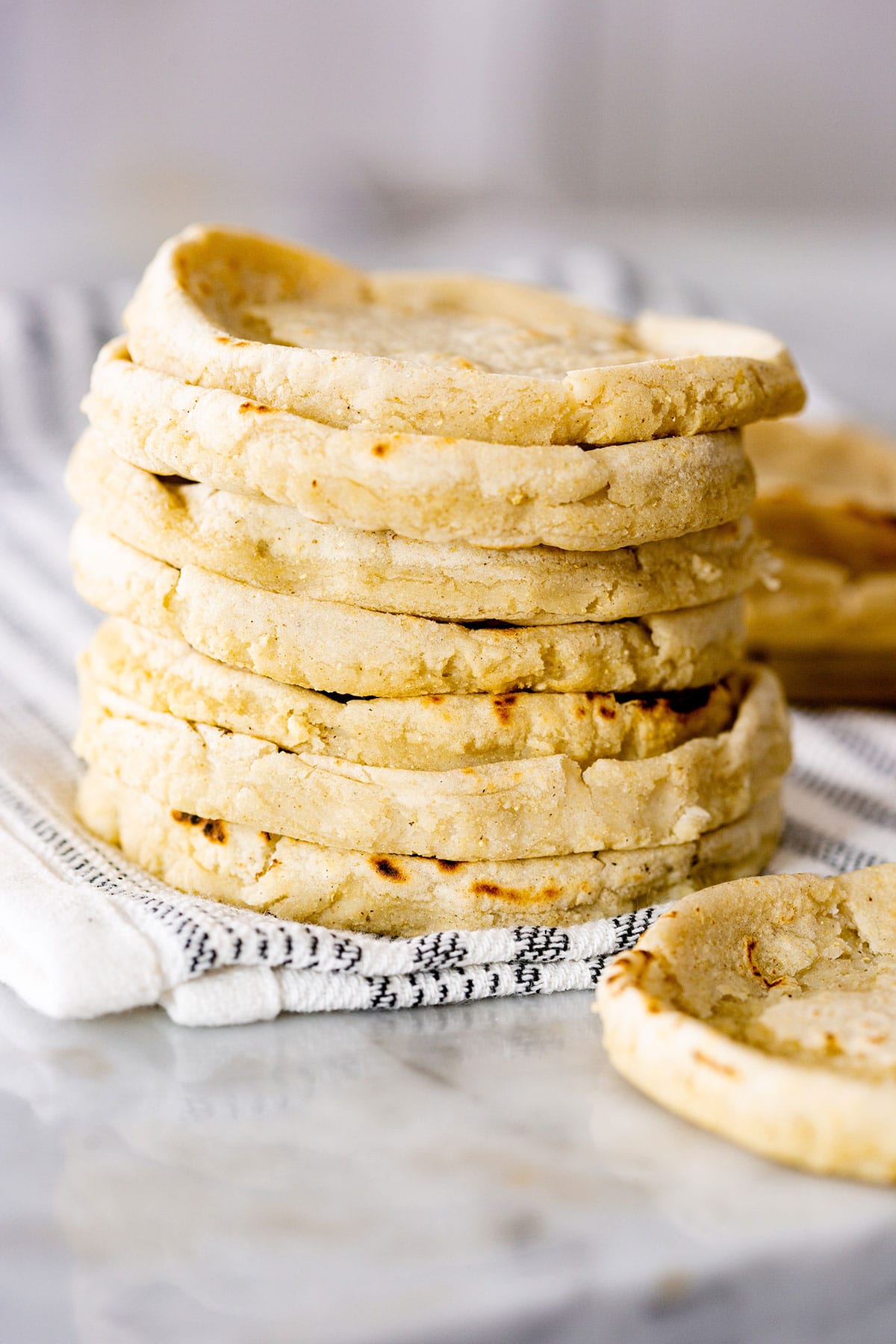
Ingredients
- Masa harina: This flour is made from nixtamalized corn and is the same used to make tortillas. You can find it at Mexican grocery stores or purchase it on Amazon.
- Water: Use room temperature water, don’t use hot water or the flour will slightly cook.
- Salt: This is optional since the toppings will add flavor, so is up to you.
How To Make Sopes
Step 1. Make the dough
Add the masa harina and salt (if using any) into a bowl and pour the water while combining everything with your hands.
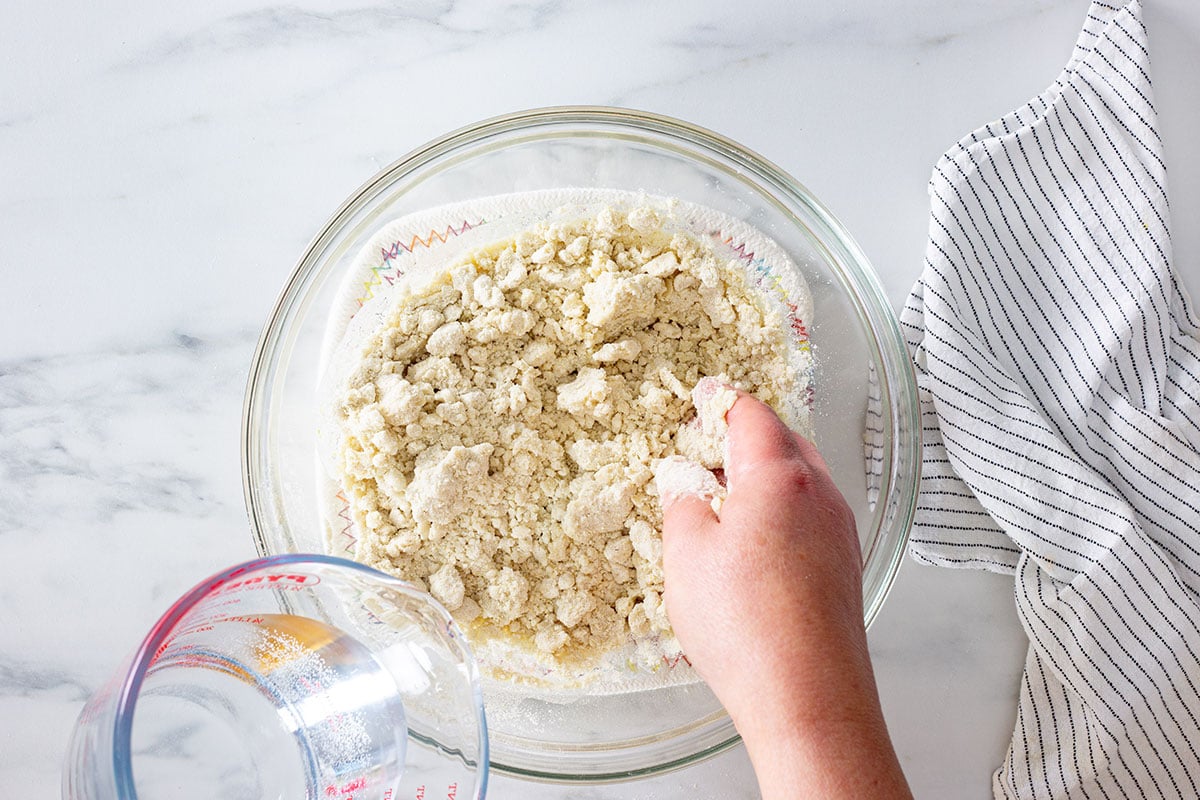
Knead until a soft dough forms, this dough should have the texture of play dough, so if it sticks to your hands add a little bit more flour. If it feels too crumbly, add more water.
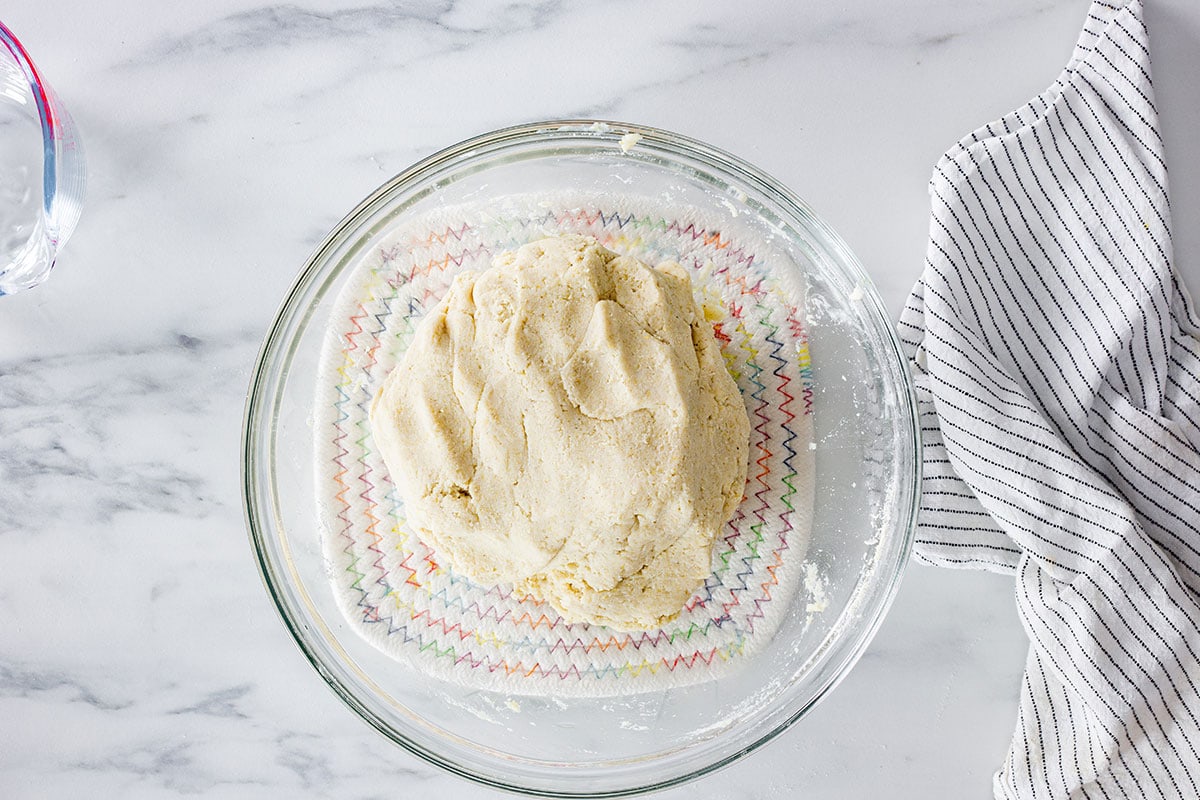
Step 2. Shape the small shells
By hand: Take a portion of dough and roll it into a ball. Slightly moist your hands with water and flatten the ball to make a patty.
Pass the dough from one hand to the other in a quickly motion while slapping it to flatten it (see the video) until you’ll have a disc about 3.5 inches (9cm) in circumference and 1/4 inch (0,65cm) thick.
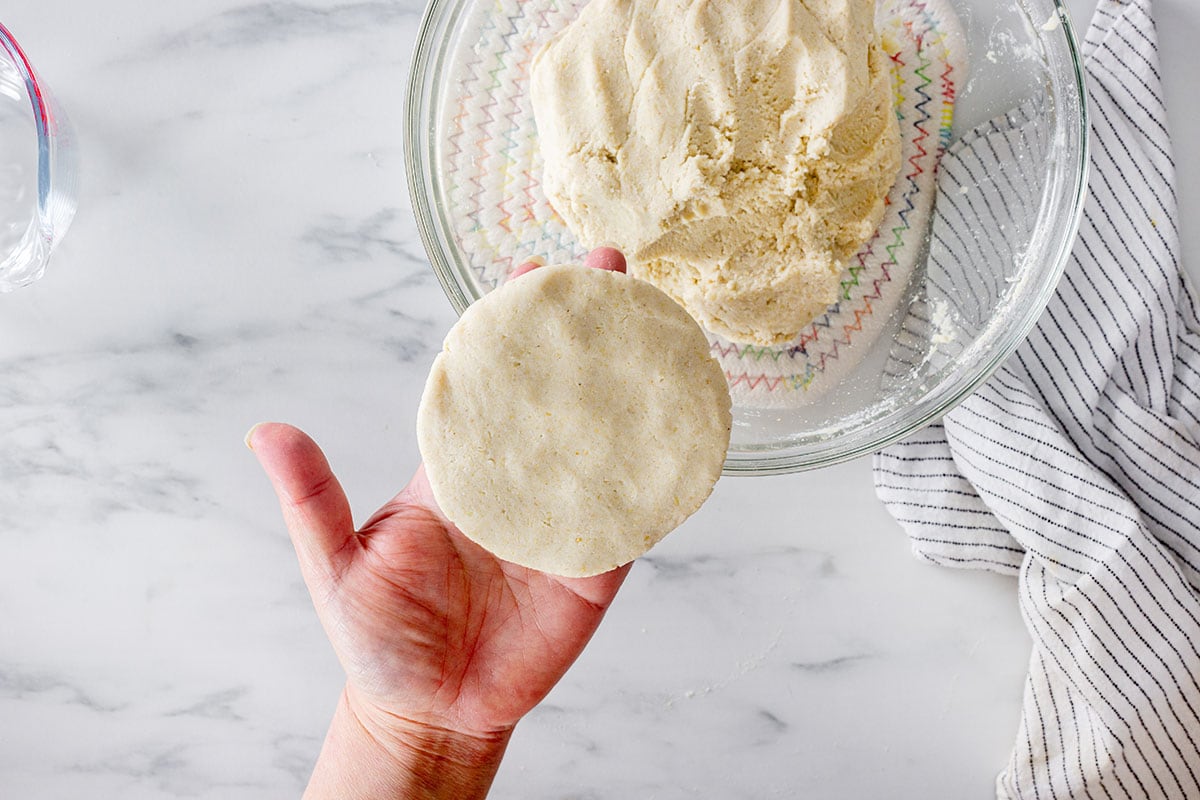
With a tortilla press: As you do with a tortilla, place the dough ball between two sheets of plastic and gently press to form a thick disc.
Make sure you don’t press too hard or it will become thin as a tortilla!
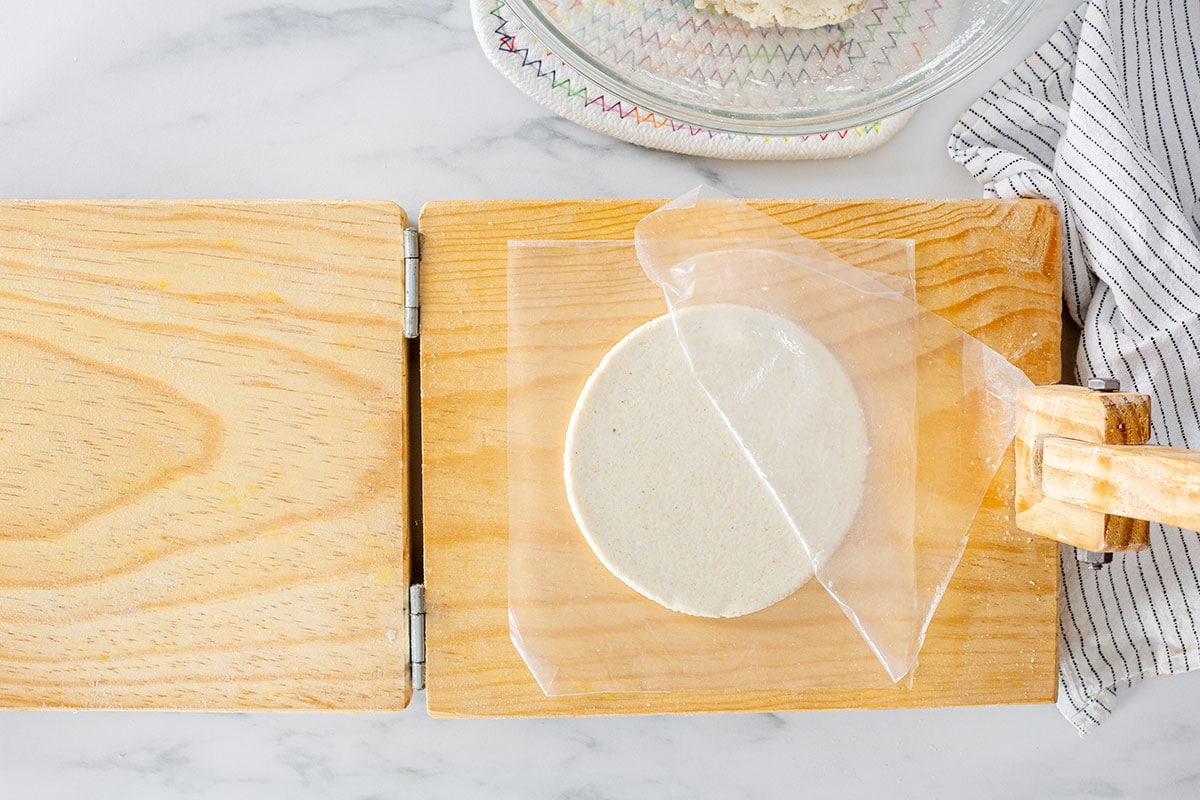
Use a heavy dish: Use a pie or casserole dish to slightly press the dough to make a thick tortilla.
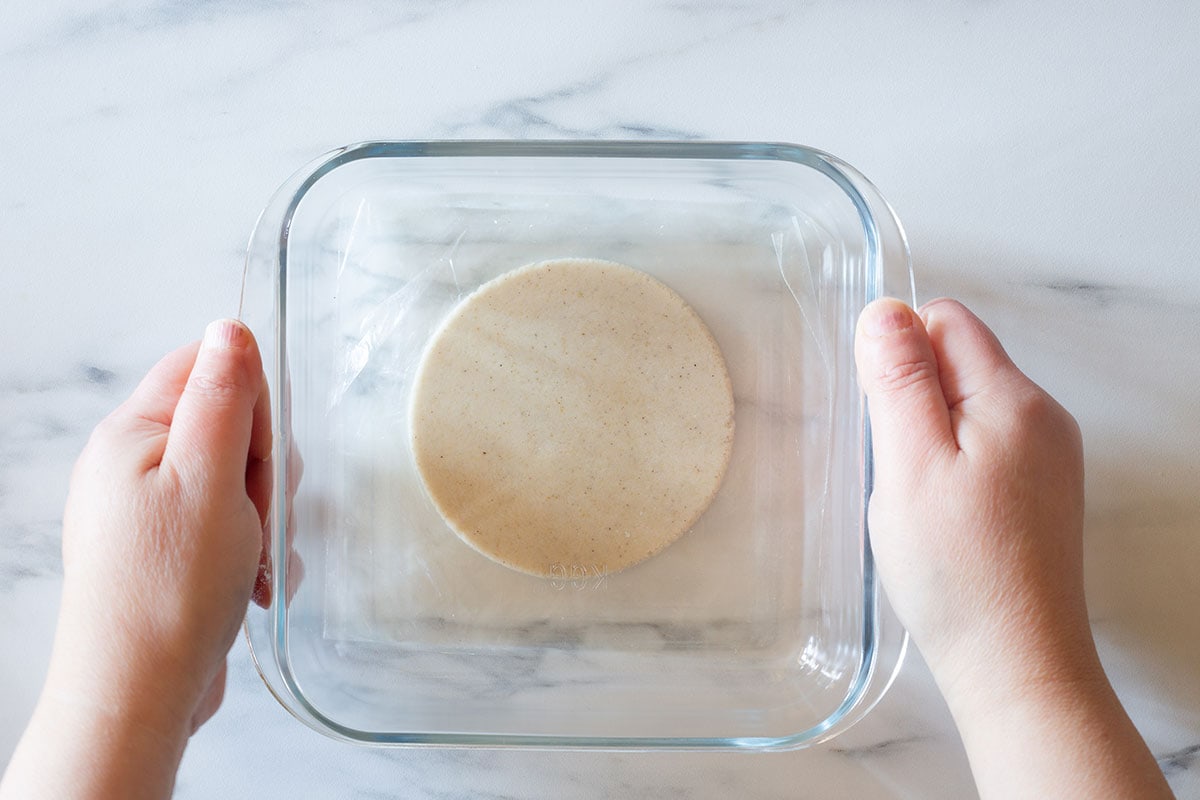
Step 3. Cook
Heat a griddle or a comal over medium-high heat. As you are shaping each piece, place them on the hot griddle and cook for about 1 minute on each side or until dark spots appear.
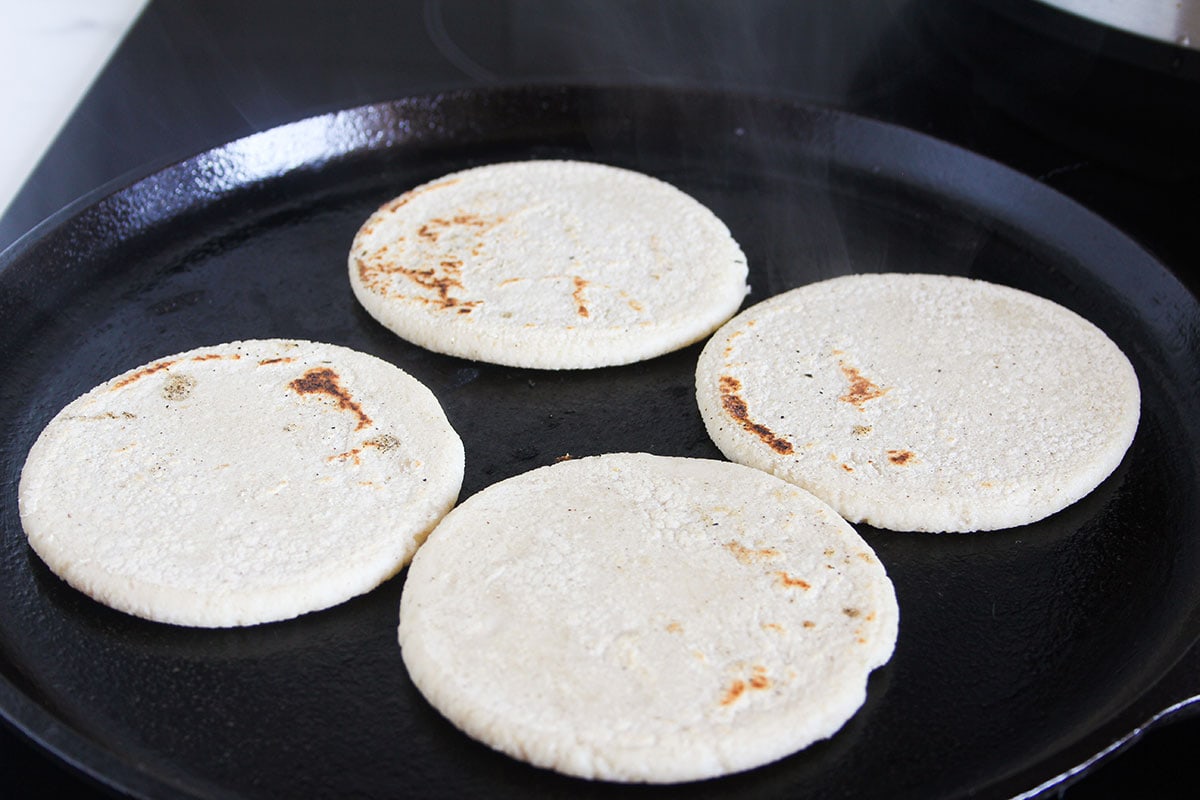
Step 4. Make the border
Place the sope just removed from the pan between a clean cloth napkin or paper towel.
Press gently, pinching between the thumb, index, and middle fingers to form a border of about half an inch (1.5cm).
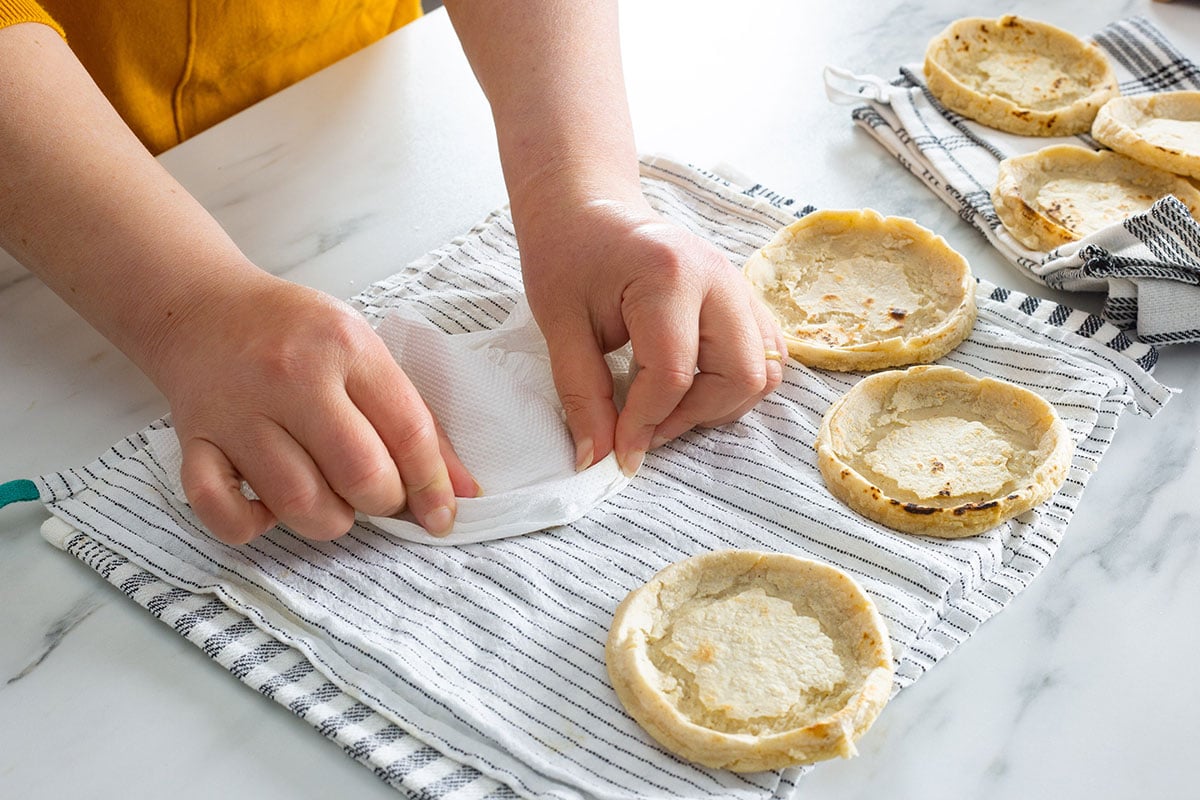
As you finish each piece, place them onto a clean kitchen towel and let them cool completely.
Your sope shells are ready. From here you can use them to make countless variations. Head over to my sope recipes for ideas and inspiration to top those little shells!
Notes And Tips
I’ve been making sopes my whole life. My grandma taught me to make them from scratch since I was just a kid. I know that they can be a little tricky to make, so let me share with you some easy tips that will help you master the recipe in no time!
- Keep a small bowl of water next to your working area and use it to keep your hands and dough moistened.
- The sope has to be hot to be able to make the border. So the best thing you can do is cook them in small batches. Ideally, two or three pieces, so you’ll have time to make the borders as soon as they are ready.
- The temperature is important because if it is too low the dough will need more time to cook and the shells will become dry on the pan.
- On the other hand, if the temperature it’s too high, the sope will burn quickly on the surface but it will remain raw on the inside.
- The best thing is to regulate the temperature depending on the stove and pan you use. It may be necessary to “sacrifice” a couple of pieces at the beginning to find out the best temperature.
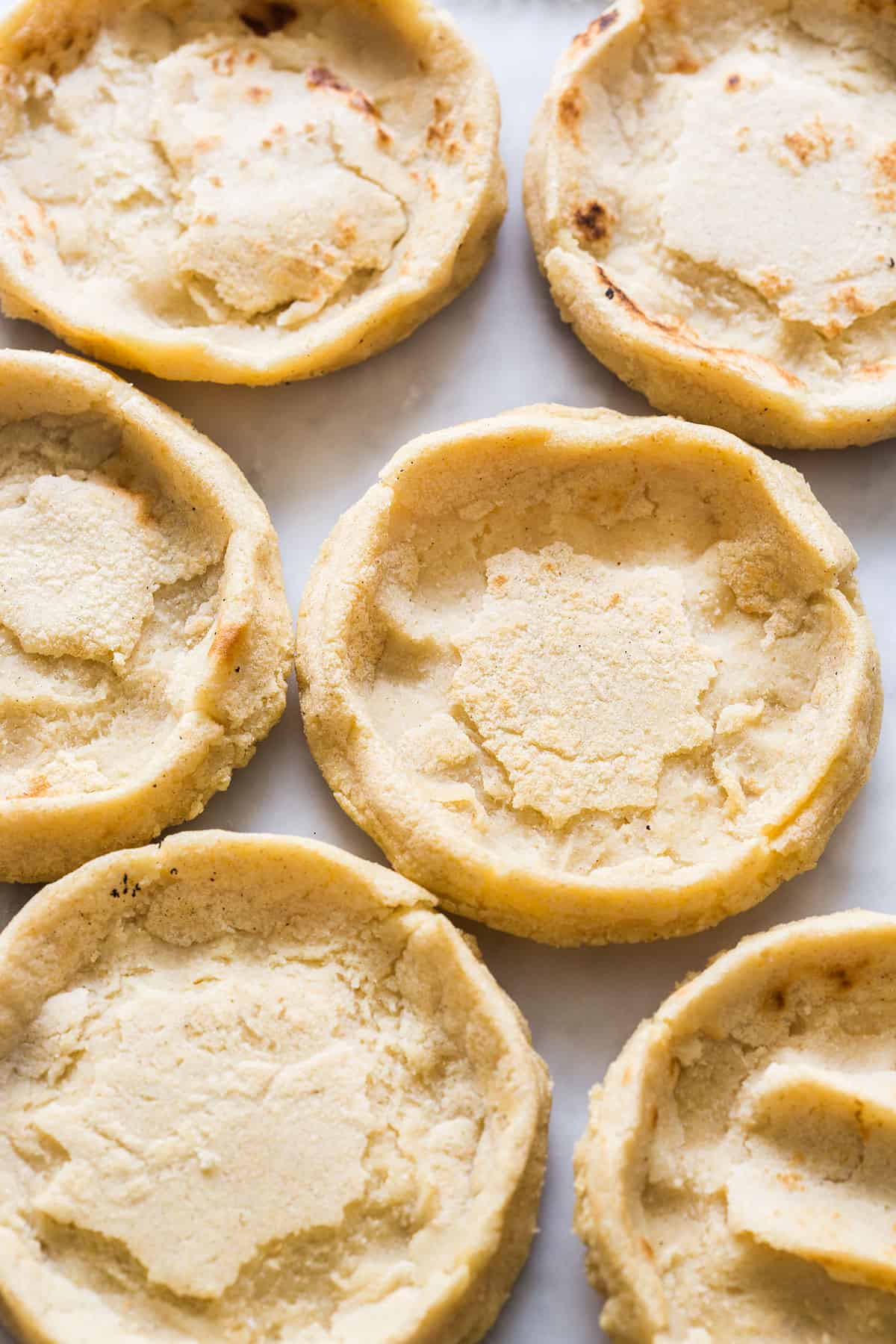
Recipe Variations
- In the state of Veracruz, you will find the picaditas, which is a thinner and simpler variation of a sope topped with salsa, cheese, and onions.
- In some states (like in Colima), two small barriers (pinched) are also made in the center of a sope and used to make the popular sopitos dish.
- Other variants include the dough in different colors, for example, the most common is masa azul prepared with blue corn, there are also those made of red masa using some type of chili (guajillo, pasilla, ancho ); green masa using nopales (cactus) or black masa using black beans.
- Mexican Huaraches is an oval-shaped variation of this basic recipe too.
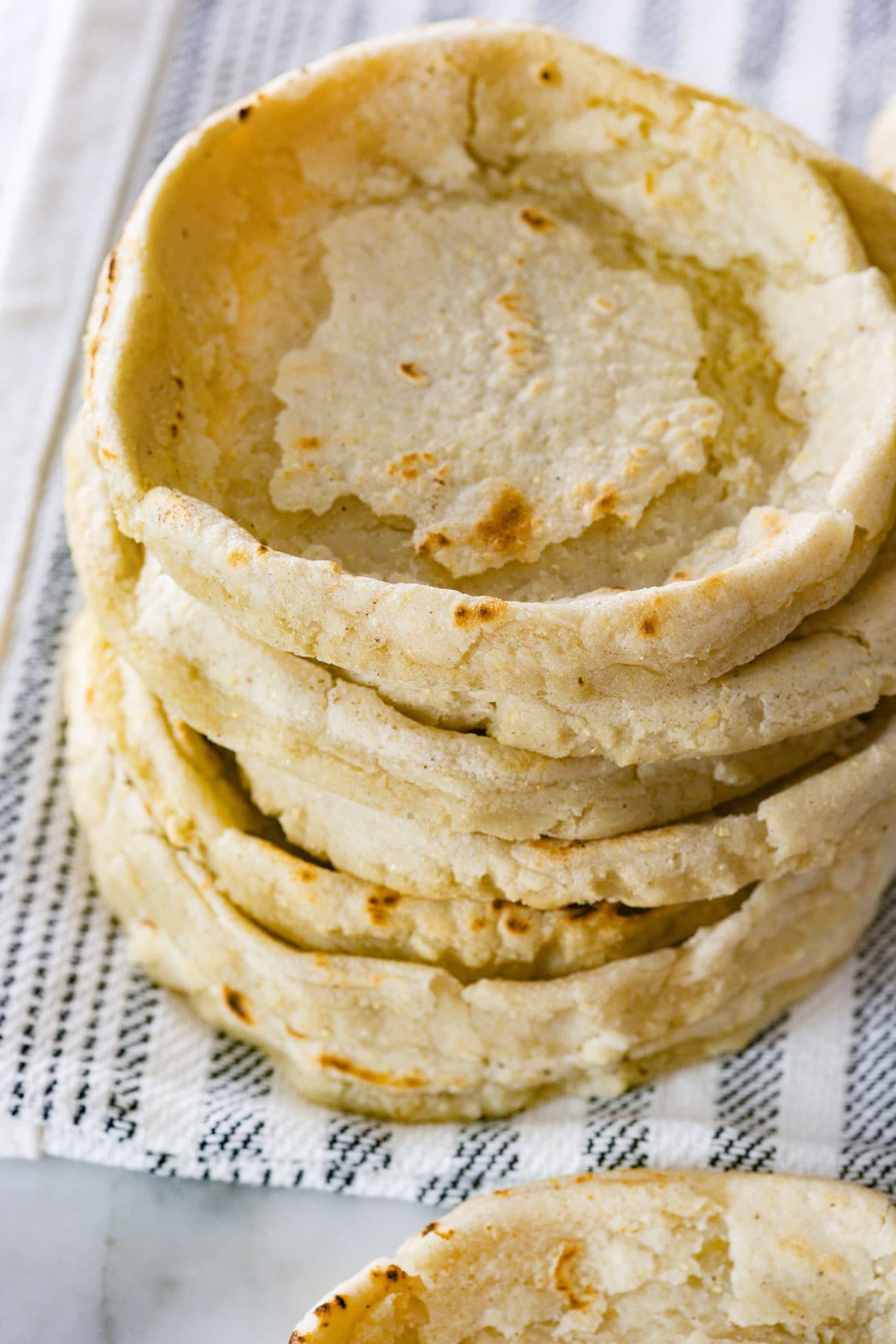
How to Eat
Think of a sope like a sort of tortilla to make tacos which can feature countless toppings.
Usually, you’ll start by frying the soft shells, after that, refried beans can be added as a base. From here, any protein like beef picadillo, chilorio (shredded pork), tinga (shredded chicken), or vegetables such as mushrooms or potatoes can be piled over.
To finish them, favorite toppings like salsas, cream, and cheese are usually added.
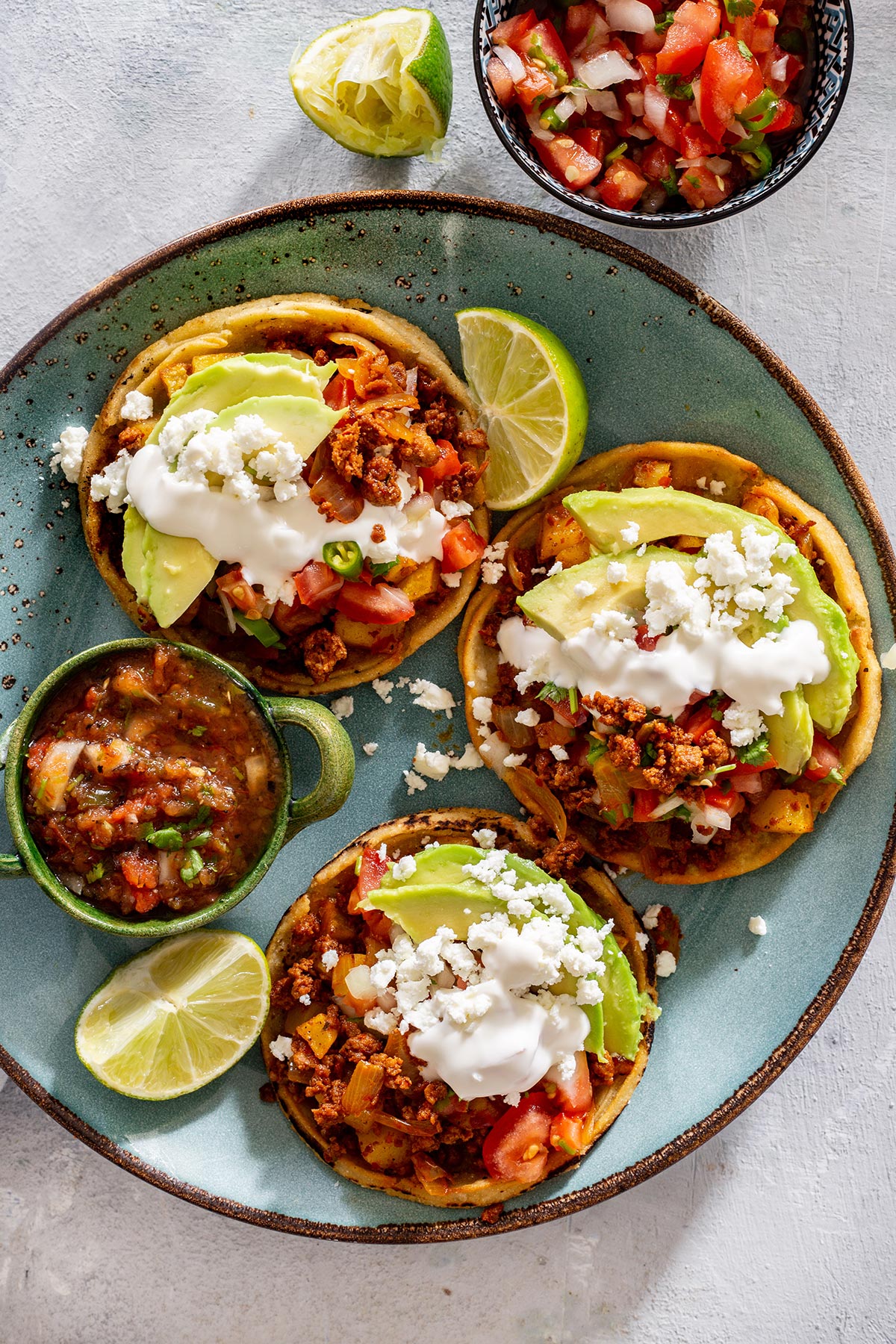
How To Store
- Fridge: Place all pieces in an airtight container previously lined with paper towels. Close the lid and store in the fridge for up to 4 days.
- Freezer: Wrap them individually or in batches of 3-4 pieces with plastic wrap. Transfer to a bag, and store in the freezer for up to 3 months.
- Thaw them in the fridge then use them as instructed in your recipe.
Video
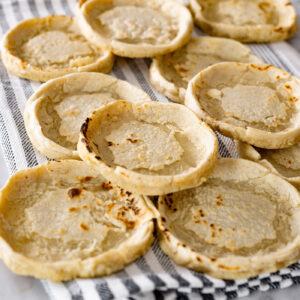
Sopes
Equipment
- a large griddle or pan
Instructions
- Add masa harina and salt in a bowl and pour the water while combining everything with your hands.
- Knead until a soft dough forms, this dough should have the texture of play dough, so if it stick to your hands add a little bit more flour. If it feels too crumbly, add more water.
Shape by hand
- Slightly moisten your hands with water. Take a portion of the dough and roll it into a ball. Flatten the ball to make a patty.
- Pass the dough from one hand to the other quickly while slapping it to flatten it until you have a disc about 3.5 inches (9cm) in circumference and 1/4 inch (0,65cm) thick.
With a tortilla press
- Place the dough ball between two sheets of plastic and gently press to form a thick disc.
With a heavy dish
- Use a heavy dish (a pie or casserole dish will do the trick) to slightly press the dough to make a thick tortilla.
Cook
- Heat a griddle or a comal over medium-high heat. Place a sope on the hot griddle and cook for 1 minute, then flip it and cook for another minute or until dark spots appear.
Make the border
- Remove a sope from the hot griddle and place it between a clean cloth napkin or paper towel.
- Press gently, pinching between the thumb, index, and middle fingers to form a border of about half an inch (1.5cm).
- As you finish each piece, place them onto a clean kitchen towel and let them cool completely.
Notes
- Keep a small bowl of water next to your working area and use it to keep your hands and dough moistened.
- The sope has to be hot to be able to make the border. So the best thing you can do is cook them in small batches. Ideally, two or three pieces.
- The temperature is important because if it is too low the dough will need more time to cook and the shells will become dry on the pan.
- On the other hand, if the temperature it’s too high, the sope will burn quickly on the surface but it will remain raw on the inside.


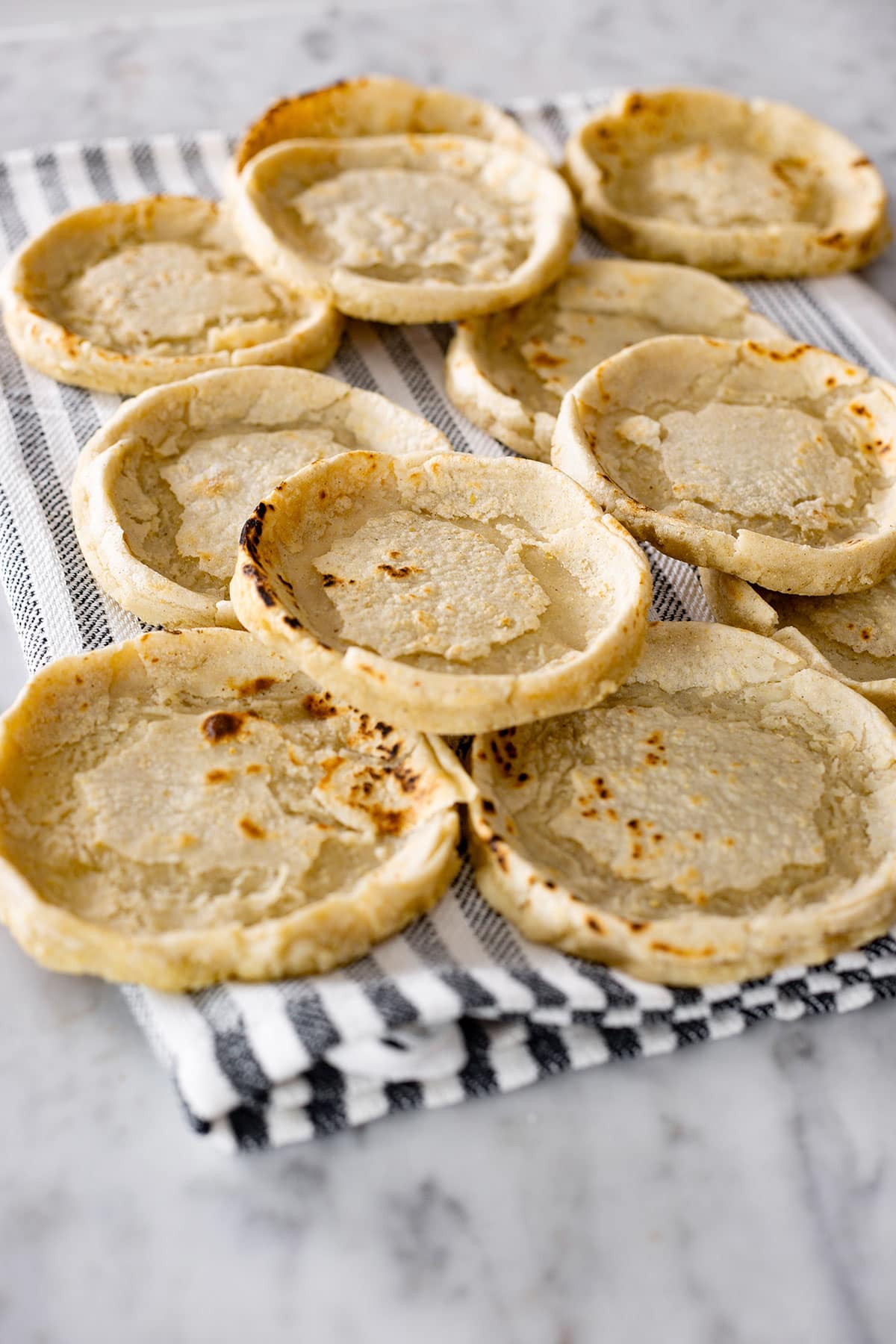
can I use a hamburger press to shape sopes?
Hi Sharyn, actually I think it could work! I haven’t done it myself but maybe you can try and tell us? Remember the plastic sheets so the dough won’t stick to the press :)
Loved the recipe! So easy to follow, specially to make them using a dish. Thank you.
I am a regular visitor of your website . I can enrich my cooking skill by seeing your blog .It was a helpful procedure to learn how to make sopes from scratch with their easy recipe.